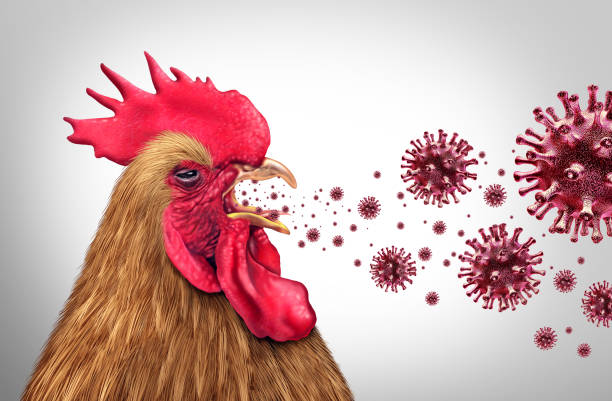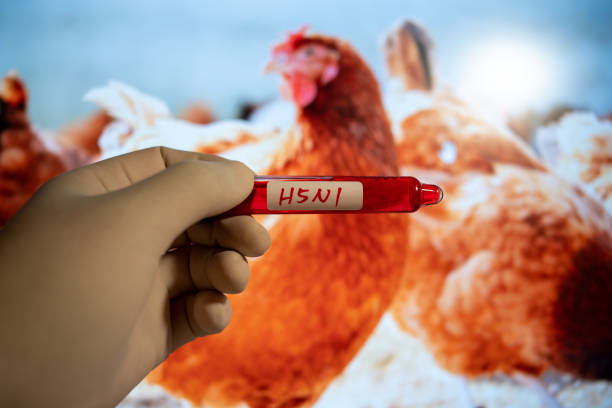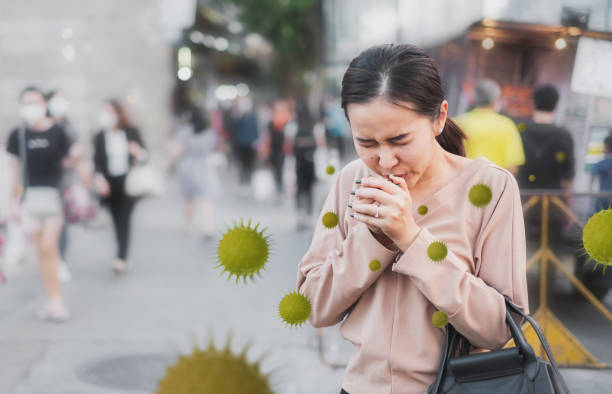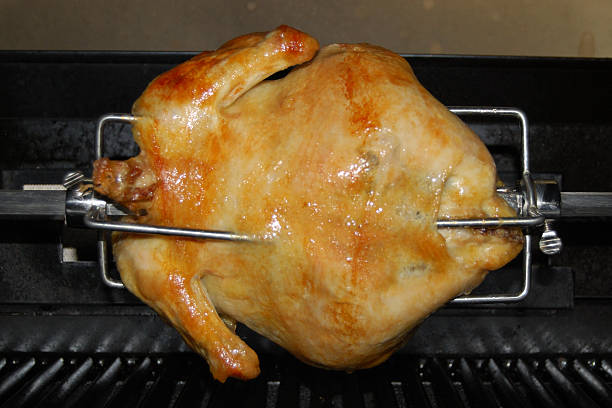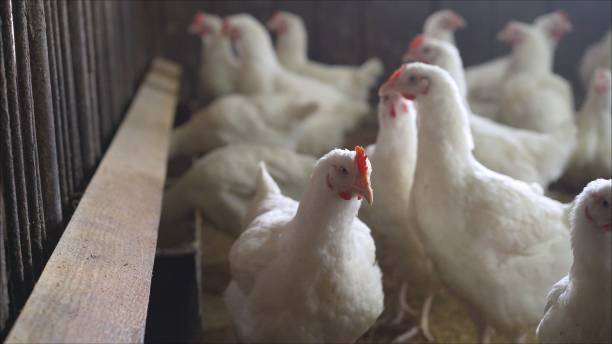Highly Pathogenic Avian Influenza (HPAI) H5N1 is a strain of the influenza A virus that primarily infects birds but has also demonstrated the ability to infect mammals, including humans. Since its initial detection in domestic waterfowl in 1996, the virus has spread across continents, leading to severe outbreaks in poultry and occasional zoonotic transmission (Centers for Disease Control and Prevention [CDC], 2024a). Understanding the dynamics of H5N1 transmission is crucial for implementing effective control measures and reducing the risk of a potential pandemic.
H5N1 Transmission Among Birds
H5N1 is primarily transmitted among birds through direct contact, contaminated environments, and migratory patterns. The virus is highly contagious in avian populations and has devastating effects on domestic poultry.
Direct Contact
One of the primary modes of H5N1 transmission is direct contact between infected and susceptible birds. The virus spreads through respiratory secretions, saliva, and feces, making close interactions between birds a major risk factor for transmission (World Health Organization [WHO], 2024).
Contaminated Environments
H5N1 can persist in water, soil, and feed, creating reservoirs of infection. Infected birds shed large quantities of the virus in their droppings, contaminating shared food and water sources. The virus can remain viable for extended periods in cold and humid conditions, facilitating its spread among flocks (CDC, 2024b).
Migratory Birds
Wild migratory birds, particularly waterfowl, act as natural reservoirs for H5N1. These birds often exhibit mild or asymptomatic infections, allowing them to travel long distances while carrying the virus. As they move across regions, they can introduce H5N1 to new areas, infecting domestic poultry and other wild birds (Henderson, 2025).
H5N1 Transmission to Humans
Although human infections with H5N1 are rare, the virus poses a significant public health concern due to its high mortality rate in infected individuals. Human transmission primarily occurs through close contact with infected birds, contaminated environments, or consumption of undercooked poultry products.
Direct Contact with Infected Birds
Most human cases have been linked to direct exposure to infected poultry, particularly in live bird markets, backyard farms, or during culling operations. Handling sick or dead birds increases the risk of inhaling viral particles, leading to infection (WHO, 2024).
Contaminated Surfaces and Aerosols
H5N1 can be transmitted through contaminated surfaces such as cages, feeding equipment, and clothing. Inhalation of dust or droplets containing viral particles is another potential route of exposure, especially in settings with poor ventilation and high concentrations of infected birds (Wilkins, 2025).
Limited Human-to-Human Transmission
While H5N1 does not efficiently spread between humans, isolated cases of limited human-to-human transmission have been documented. These cases typically involve prolonged close contact, such as caregiving within households or healthcare settings. The virus has not yet demonstrated sustained human-to-human transmission, but concerns remain over its potential to mutate and acquire this capability (Jameson, 2025).
Preventive Measures
Preventing the spread of H5N1 requires a combination of biosecurity measures, public health interventions, and surveillance efforts.
- Strict Biosecurity in Poultry Farms: Implementing strict hygiene protocols, restricting farm access, and monitoring bird populations can reduce the risk of outbreaks.
- Surveillance and Early Detection: Regular testing of poultry and wild bird populations helps identify and control outbreaks before they spread.
- Personal Protective Equipment (PPE): Workers handling birds should wear masks, gloves, and protective clothing to minimize exposure.
- Public Awareness: Educating communities about the risks of handling sick birds and the importance of cooking poultry products thoroughly can reduce human infections.
Conclusion
H5N1 remains a significant threat to both avian and human populations. Understanding how the virus spreads among birds and to humans is essential for implementing effective control measures. While current human-to-human transmission is limited, the potential for the virus to evolve underscores the importance of ongoing surveillance, research, and preventive actions.
References
Centers for Disease Control and Prevention. (2024a, April 26). Technical report: Highly pathogenic avian influenza A(H5N1) viruses. U.S. Department of Health & Human Services. https://www.cdc.gov/bird-flu/php/data-research/report-4-26-2024/index.html
Centers for Disease Control and Prevention. (2024b, June 17). Emergence and evolution of H5N1 bird flu. U.S. Department of Health & Human Services. https://archive.cdc.gov/www_cdc_gov/flu/avianflu/communication-resources/bird-flu-origin-infographic.html
Henderson, S. (2025, March 5). Deadly H5N1 bird flu strain has hit all but one continent. Axios. https://www.axios.com/2025/03/05/bird-flu-h5n1-australia-only-continent-no-cases
Jameson, T. (2025, March 5). Here’s why the U.S. is not working to vaccinate birds against avian flu. MarketWatch. https://www.marketwatch.com/story/heres-why-the-u-s-is-not-working-to-vaccinate-birds-against-avian-flu-b5daa56d
Wilkins, R. (2025, March 5). Start planning for bird flu pandemic now, expert warns amid fears highly pathogenic virus spreads by wind. The Sun. https://www.thesun.co.uk/health/33717393/bird-fu-pandemic-now-mutant-bug/
World Health Organization. (2024, May 16). Influenza A(H5N1): Questions and answers. https://www.who.int/news-room/questions-and-answers/item/influenza-h5n1
